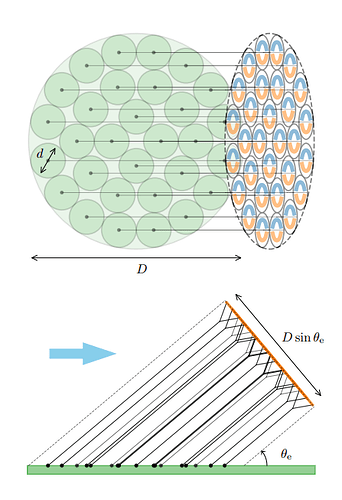The Fig. 1 of the paper cited just above is represented in this comment which included said figure:
Each MAWES here composed of a pair of two opposed wings could be replaced by tethered-aligned Rogallo rescue parachute kite AWES, benefiting from high thrust and High drag coefficient of about 4 and 3 respectively. Perhaps the control would be simpler if Rogallo kites are stable enough and can fly in group. Possible collisions could have no serious consequences with these slow and flexible wings.
Note that the Betz limit and power available in the wind is only 4/27 for AWE lift power systems, and not 16/27 (which is the real Betz limit) as stated page 2 in the paper in reference: “We assume that the M-AWES wing area is adapted to reach the Betz limit η = 16/27 on the available flight area assigned to each individual system.” while “We consider “lift-mode” AWE systems, where power is produced in a
periodic fashion: first, the tether is reeled out at high tension, driving a winch at the ground station. Then, tether is reeled back in again at low tension, resulting in a net positive energy gain.”
This difference is significant because here AWES tends to capture almost the entire wind area.
Conversely, subject to further investigation, it is not impossible that with very high drag coefficients Cd the Rogallo and other parachute kites could reach values well above 4/27 (8/27 with Cd of 2 for example?) in reeling mode.
The unknowns are, among others: would the Cd be as high when the Rogallo rescue parachute kites were flying in tight groups, letting only a little air escape between the units, and perhaps a lot more air around the whole. All this would require further study.
The same Fig.1 could also maybe apply to Low radius loop.
Said Fig.1 looks to be a good way to maximize the power to space and land use ratio, thanks to both the vertical superposition of the wings benefiting from a fresh wind, and the length of the individual tethers which decreases as we move away from the center.
